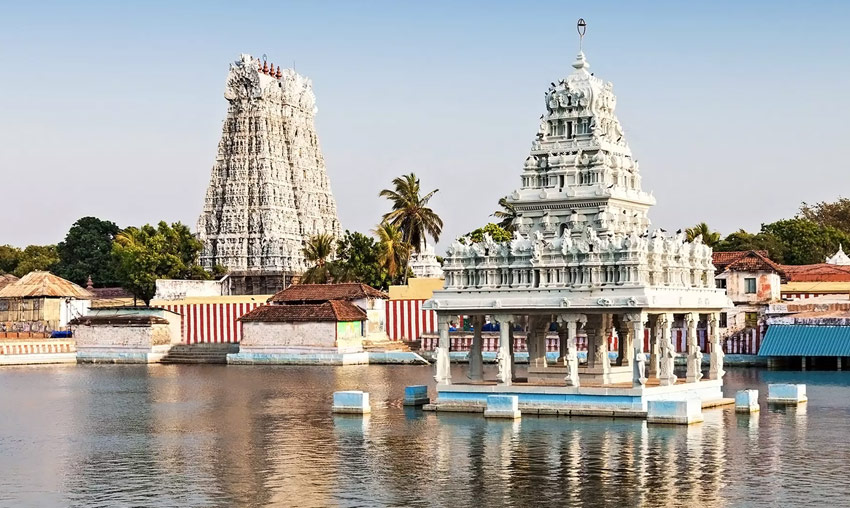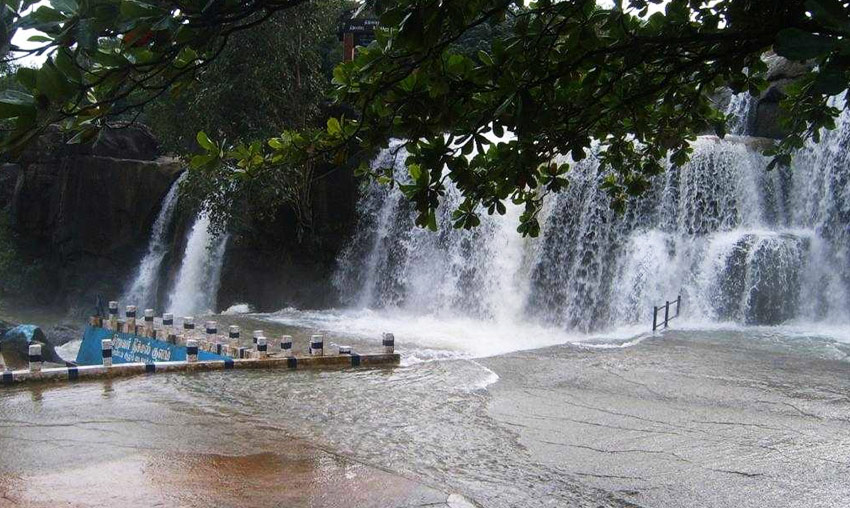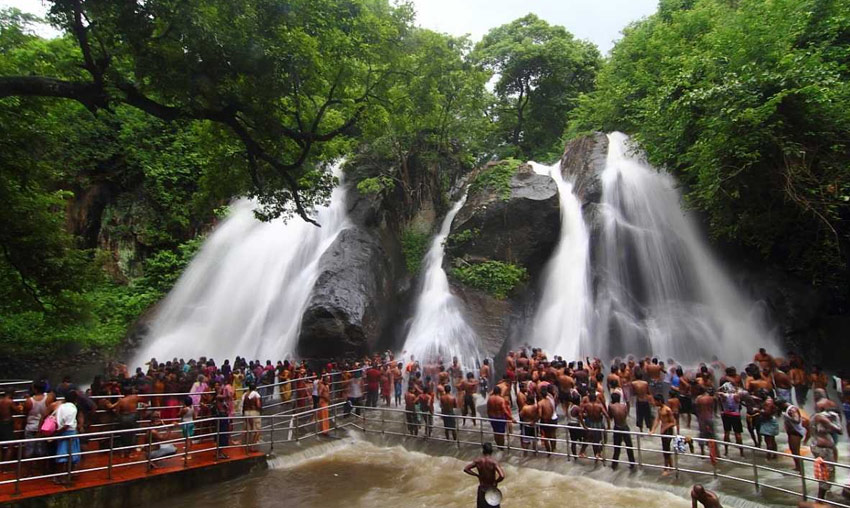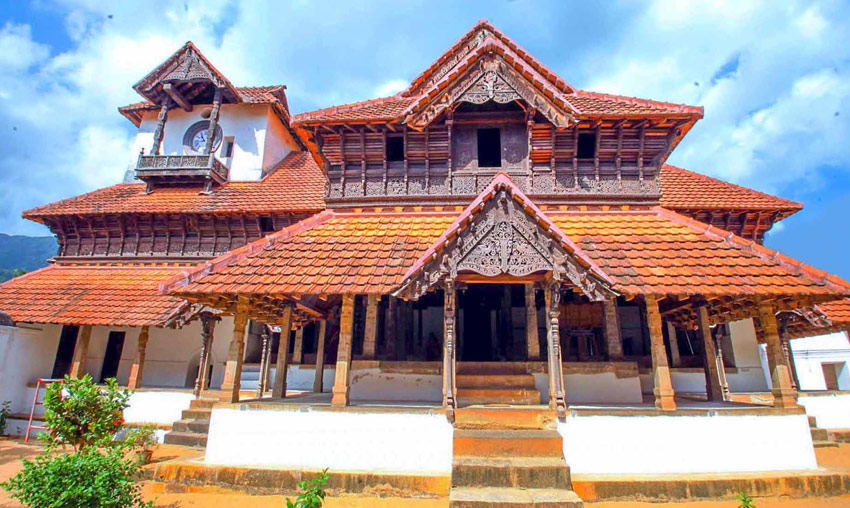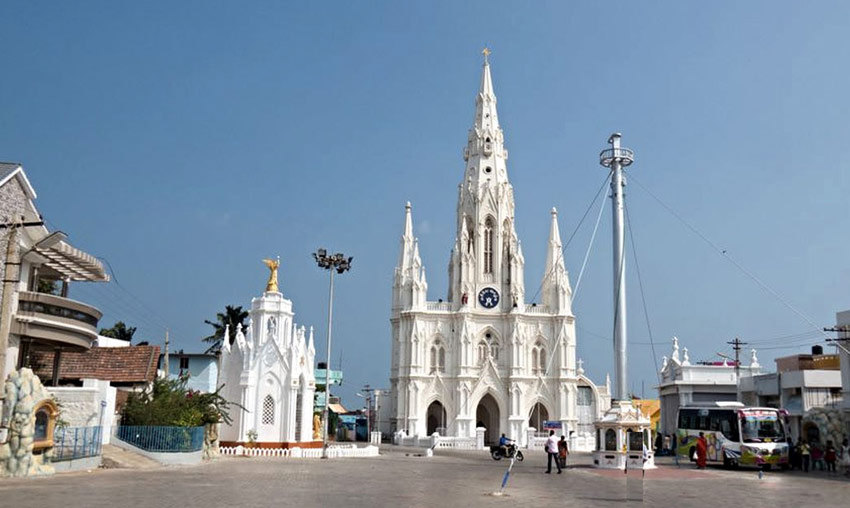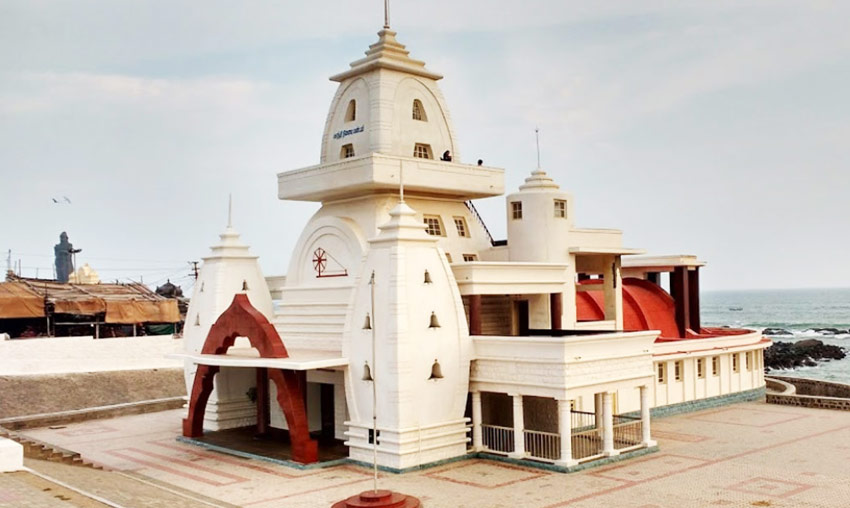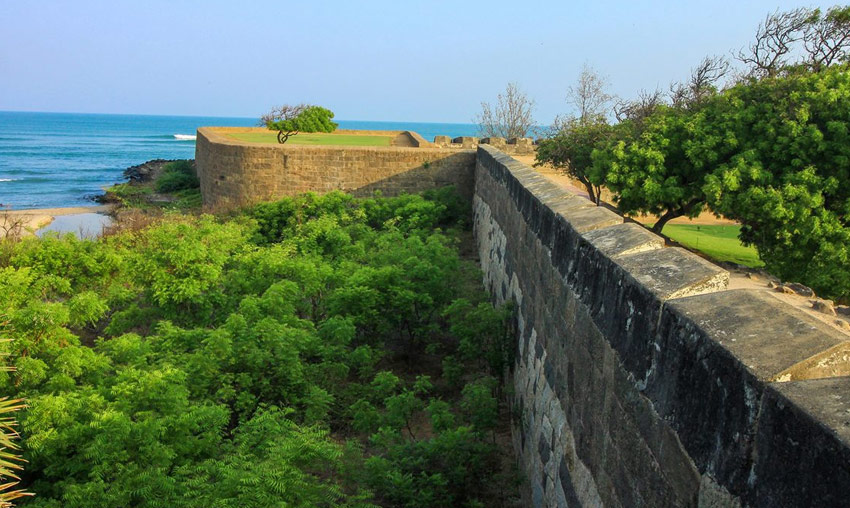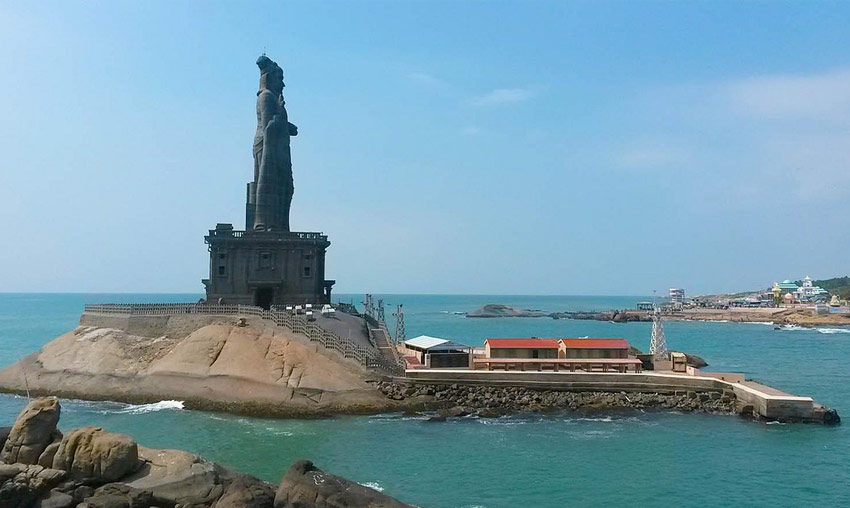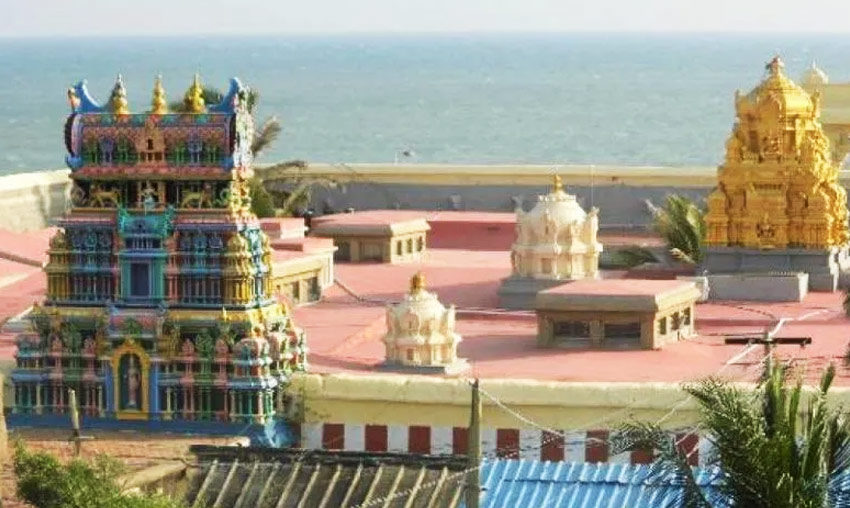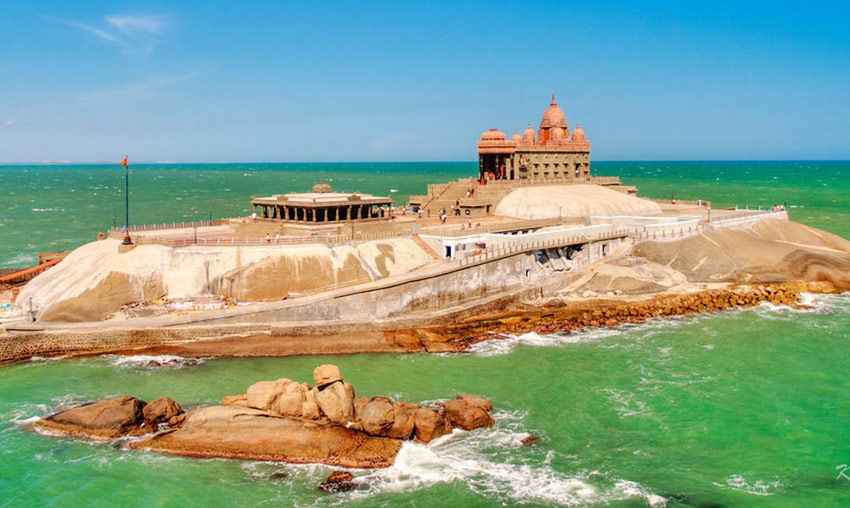Thanumalayan / Suchindram Anjaneyar Temple, Kanyakumari (Entry Fee, Timings, History)
The Thanumalayan Temple, also called Suchindram Temple, is situated approximately 11 km from Kanyakumari in the Suchindram area. This temple’s dedication to the Trinity of God—Lord Shiva, Lord Vishnu, and Lord Brahma—is its most outstanding feature. As a result, it holds great religious significance for followers of both the Shaivite and Vaishnavite sects.
With almost 30 shrines and stunning architecture, it is also called the Sthanumalayan Perumal Temple. Sri Sthanumalayan, the temple’s deity, is a representation of Sthanu, or Lord Shiva; Mal, or Lord Vishnu; and Aya, or Lord Brahma. Another name for this temple is Suchindram Lord Anjaneyar Temple.
History of Suchindram Temple, Kanyakumari
According to legend, the historic Suchindram Temple was constructed in the seventeenth century. Nonetheless, some of the temple’s components date from the eighth to the fifteenth centuries. The temple’s inscriptions are from the ninth century.
Suchindram Temple was governed by the Travancore Kingdom before to Kanyakumari’s incorporation into Tamilnadu State. Padmanabhapuram was the location of the Travancore kingdom’s principal temple. It is a Vaishnavite temple. The majority of people living in Nagercoil, which was formerly ruled by the Cholas, Chera, and Pandya Reign, were Shaivites. As a result, this temple offers a stunning location for worshipping Lord Shiva, Lord Vishnu, and Lord Brahma. The worship at this temple is taken care of by the families of Namboodiri Brahmin.
Architecture of Suchindram Temple, Kanyakumari
Kanyakumari’s Suchindram Temple is renowned for both its enticing architecture and its religious significance. Everyone is drawn to its excellent structure.
This temple features a seven-story white Gopuram with exquisitely carved figures of several deities adorning its portico. A magnificent example of South Indian temple architecture, this 134-foot-tall Gopuram is made even more stunning by the light beams that fall upon it. The large temple tank to the right is where the water utilised for temple operations comes from.
The four 18-foot-tall melodic pillars are the temple’s main attractions. One granite stone was used to create these pillars. These pillars, which are in the Alankara Mandapam area, are a remarkable example of architecture that produce different musical notes when touched.
With about 1035 exquisitely carved pillars, the temple also features a dancing hall.
The temple’s sanctum sanctorum is home to the ruling deities Sthanu (Lord Shiva), Mal (Lord Vishnu), and Aya (Lord Brahma). There is a temple dedicated to Lord Vishnu by the side of the sanctum sanctorum; the Lord’s idol was created by fusing eight different types of metal. Lord Ganesha’s shrine is on the left, and the shrines of Lord Rama and Goddess Sita are on the right. There is Navagraha mandapa on the front. Kailasanathar, Nataka Sala, Vadakkedam, Kailasattu Mahadeva, Pancha Pandavar, Kontai Adi, Guru Dakshinamurthy, Cheravasal Sastha, Lord Muruga, Garuda, Subramania Swamy, and many more are among the approximately thirty shrines in this temple.
Every devotee here would be captivated by the enormous 22-foot idol of Lord Hanuman. A single granite rock was used to sculpt the statue. Because of the fear of Tipu Sultan attacks, this statue of Lord Hanuman, one of the biggest in India, was kept hidden inside the temple. It was discovered later in 1930 and then returned to its former splendor. The temple’s carving of Vinayaki (Female Vinayaka) is another remarkable feature. The magnificent image of Nandi, Lord Shiva’s vehicle, is equally alluring. It is 13 feet tall, 21 feet long, and 10 feet wide.
Legend behind Suchindram Temple, Kanyakumari
The Suchindram Temple is the subject of numerous legends. One of the well-known legends about the Suchindram Temple states that the holy Trinity—Lord Shiva, Lord Brahma, and Lord Vishnu—arrived at the historic temple one day. Devi Anusaya, the saint Atri’s wife, resided here. Trinity chose to put Anusaya to the test. Therefore, they went to Anusaya, a chaste woman, pretending to be three sages, and requested sustenance in the absence of Sage Atri. But when food and lambs were provided, they declined, claiming that they had promised to accept offerings exclusively from those who were without clothing.
She chose to give them food and satisfy their request because it was sinful to turn away a seeker’s assistance. After dousing the three sages with holy water, she transformed them into infants: Brahma as Chandra, Vishnu as Dattatreya, and Shiva as Durvasa. She eventually gave in to their requests and fed the three infants. When the goddesses Saraswati, Parvati, and Lakshmi saw this, they descended and begged to transform their husbands back into their former selves. Following this, all three Gods were transformed back into their original forms. At the request of Anusaya, all Trimurthi appeared as Swayambhu Lingas as they were departing for their sacred home. under the Amaltas tree, known as Sthala Vriksham, which is now more than 2500 years old. A small shrine, has been constructed Konnaya in front of this holy tree.
This temple and the town are linked to the Devi Kanyakumari Temple through another mythology. According to mythology, when Lord Shiva came to marry Devi Kanyakumari, he remained in Suchindram. He set out from here for the wedding, which was supposed to take place at a lucky hour. Sage Narada claimed that a rooster had falsely crowed to signal the start of morning when he arrived at Vazhukkamparai, which is about 5 km from Suchindram. Lord Shiva has returned to Suchindram without being married to the Devi since he believes that the opportune hour has passed.
The temple’s ten-year-old rite is the subject of another Suchindram Temple narrative. Agnipariksha was practiced at the temple until the 1860s, when the government outlawed it. According to the custom, any priest or Brahmin who was accused of engaging in inappropriate behavior had to undergo a ceremony. The suspected individual had to remove the silver ox from the copper jug and dip his hand in the hot ghee with the King’s approval. Then a rag was placed over his hand and it was bandaged. The Brahmin is deemed innocent if his hand emerges unharmed on the third day.
Suchindrum Temple Festivals
The 10-day vehicle festival, which takes place in December or January, is Suchindram Temple’s most well-known celebration. Other notable temple celebrations include the August Avani Festival, the April Chithirai Festival, and the March Masi Festival.
Timings of Suchindram Temple, Kanyakumari
Suchindram Temple is open for darshan from 4.30 to 11.30 in the morning. In the evening, the temple reopens for darshan from 5:00 PM and shuts at 8:30 PM.
How to Rech Suchindrum Temple, Kanyakumari
The Suchindram Temple is easily accessible by road and is situated 11 km from Kanyakumari. The distance from Nagercoil is about 7 km. Regular buses travel to Suchindram from Tirunelveli, Trivandrum, and Kanyakumari. From Kanyakumari, visitors can also take a taxi to the temple.
